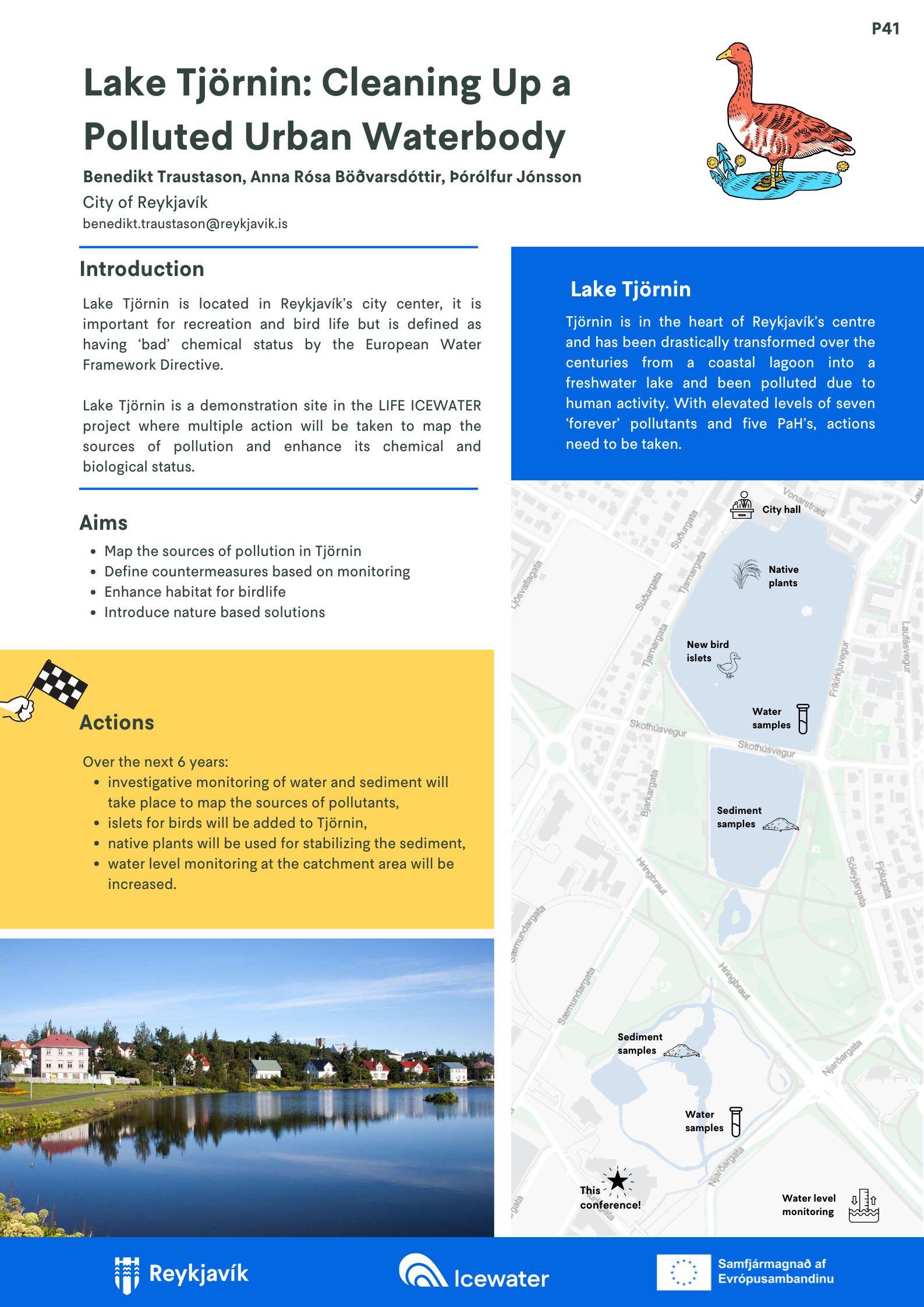Education about Vatnsmýri at Nordic conference

The Department of Environment & Planning is one of the Icewater partners. The Nordic Hydrological Conference (NHC) took place in Iceland June 3-5. Experts from Nordic and Baltic countries gathered there to discuss how climate change affects water environments and how to respond with adaptation and mitigation measures.
European Union grant

LIFE Icewater received a grant from the European Union to work on projects that speed up and improve Water Management Plan implementation in Iceland. LIFE Icewater aims to increase knowledge about water use, characteristics and condition in Iceland, ensure smooth and coordinated administration in water affairs, improve water quality through municipal sewer system improvements and wastewater treatment, and educate the public and stakeholders about the importance of water. The projects are divided into seven parts and will be carried out from 2025 to 2030.
Twenty-three parties are participating in this project, with the Environment and Energy Agency leading the effort. Icelandic partners in the Icewater project took a site visit after the hydrology conference. In Vatnsmýri, historian Stefán Pálsson shared the history of the area. Ágúst Guðmundsson from the engineering firm Vatnaskil reviewed Vatnsmýri's hydrology. Haraldur Rafn Ingvason from the Marine and Freshwater Research Institute presented the main results of biota monitoring in Vatnsmýri and Tjörnin. Ornithologist Jóhann Óli Hilmarsson discussed the area's birdlife and Þórólfur Jónsson from the Department of Environment & Planning spoke about planning and creating the nature reserve in Vatnsmýri and measures to improve water quality. The City also created a poster with information about Tjörnin.
Tjörnin discussed at the water conference
Þórólfur, Benedikt Traustason and Anna Rósa Böðvarsdóttir from the City reported that while chemical pollution has been detected in Tjörnin, the pond's biological condition has improved in recent years. Tjörnin is located in the heart of the city. Tjörnin's bird population has been monitored more or less continuously since 1973. Five duck species have been regular breeding birds during this period. Tjörnin boasts rich birdlife during winter and many waterfowl spend winter there, most prominently mallards, greylag geese and whooper swans.
The aquatic biota has been monitored for the past 10 years and Tjörnin's water balance is also tracked as it receives both groundwater and surface water.
The goal is to map the pollution that reaches Tjörnin and find future solutions. This spring the reconstruction of Stóri Hólmi in Tjörnin was completed and previously the islet in Þorfinnstjörn was restored to improve conditions for birdlife, especially for Arctic tern nesting. Plans are in place to also improve conditions at Litli Hólmi in Tjörnin. Sampling of sediment and water in Tjörnin will begin soon, with Reykjavík Public Health overseeing the work.
Improvements to the nature reserve in Vatnsmýri were completed in 2014 when ditches were finished around the area with bridges that are removed during bird breeding season.


